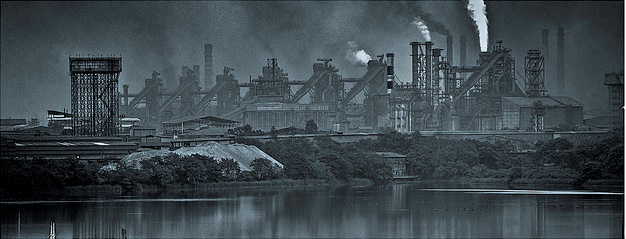
 In a new edited volume, Stuart Corbridge and Alpa Shah explore how the Indian economic boom is being experienced by the vast majority of Indians. Here, they offer an overview of the papers included and highlight key themes that emerged.
In a new edited volume, Stuart Corbridge and Alpa Shah explore how the Indian economic boom is being experienced by the vast majority of Indians. Here, they offer an overview of the papers included and highlight key themes that emerged.
Talk of India being, or shortly becoming, a major economic power blithely disregards the fact that more than 800 million Indians continue to survive on less than $2 a day, or that just eight Indian states have more poor people than 26 of Africa’s poorest countries put together. Close to 450 million Indians are forced to subsist on less than $1.25 a day in purchasing power parity terms – which is where the World Bank now draws its international poverty line.
In our special issue of Economy and Society, now published as a book by Routledge, we explore how the Indian economic boom is being experienced by the vast majority of Indians, many of whom, far from being excluded from channels of economic circulation and market exchange, are ever more tightly snarled into its underbelly. The papers in the collection take the reader on a journey which offers insight into the themes of growth that fails to reduce poverty, informalisation, the re-emergence of debt bondage and the pacification of les classes dangereuses, as well as an assessment of the prospects for alternative visions.

Johnathan Parry starts the journey at the Indo-Soviet Bhilai Steel Plant (BSP) in Chhattisgarh, where an aristocracy of labour that had risen above the shackles of family, caste and ethnic divisions is increasingly being replaced by a more vulnerable contract labour force. Parry charts the salience of a new kind of sociological distinction between the ‘working’ and ‘middle’ classes. This distinction does not rest on the division between manual and non-manual labour, but rather between secure naukri – that is regular salaried employment – and kam – insecure, contract work; or, as Parry explains, “untenured casual employment that is prototypically paid by the day and is never secure”.
Laura Bear then takes us to the banks of the Hooghly River, where ships continue to be built but liberalisation has produced equally brutal conditions of work in the process of manufacturing to that faced by the contract workforce in Bhilai. The attraction of Norwegian shipping companies to the Hooghly river bed is very clearly linked to the fact that labour power is easily exploited here, making the ship workers starkly vulnerable to changes in the global value chain and in processes in which their sweated labour is actually erased in favour of a narrative of production that is appropriated by a foreign audit regime.
Barbara Harriss-White, Wendy Olsen, Penny Vera-Sanso and V. Madha Suresh take us to Chennai’s slums in the wake of the financial crash. The informal, unregistered economy in which labour most of the 93 million people who live in India’s slums, has been increasingly harnessed to a volatile global economy through liberalisation and deregulation. The major impact of the crisis in India was a fall in demand for its exports which led to hundreds of thousands of jobs lost. In this context, Harriss-White et al. consider how rising food price inflation, a shortage of formal business credit and rising unemployment in the construction and IT services industries created new vulnerabilities for slum-dwellers in Chennai. Furthermore, it is the elderly, especially women and wage-workers, who have been worst affected by the multiple shocks of the post-2008 credit crisis.
In Tiruppur, Grace Carswell and Geert de Neve show that the boom in garment and textile industries that has been a significant driver of Indian economic growth has nurtured regimes of debt bondage among industrial workers even as the phenomenon of wage slavery has virtually disappeared in the agrarian economy. Capitalist relations of production, rather than freeing labour, are here deepening their bondage to employers.
Public concern about the vulnerability in which poor people find themselves has resulted in new nation-wide schemes framed in the language of rights: the Right to Food, the Right to Information and the Right to Work. Stuart Corbridge and Manoj Srivastava draw on research conducted in Bihar and Madhya Pradesh to explore how rural populations are experiencing the implementation of employment assurance schemes whose practical workings are always dependent on the regional political systems in which they are enmeshed.
The journey ends in Jharkhand, where the Maoist-inspired Naxalite movement continues to aspire to form alliances across caste and class in an underground guerrilla war for a new India with a new economic policy, one which, it claims, would more equally redistribute the fruits of economic growth. Unsurprisingly denounced by the Indian government as the country’s greatest security challenge, allegedly affecting up to two thirds of the country’s territory, Alpa Shah highlights how the Maoists struggle to create new kinds of social relations in their guerrilla zones and the double-edged significance of kinship, caste and community, all of which they depend on for support.
***
Despite the formidable counter-movement against the Indian state from the Naxalites, 65 years after Independence the majority of Indian workers and peasants find it as difficult as ever to confront the powers of capital or the bureaucrats and politicians who rule over them – a fact that will surprise only hard-line modernisation theorists. Considerations of caste, ethnicity and gender have generally hardened, not dissipated. In the years since c.1991 the position of labour in contemporary India has in many cases weakened further, both as a result of continuing demographic pressures and as a result of the slow roll-back of India’s small organised sector.
The incidence of extreme income poverty is reducing in India, but much more slowly than standard economic theory would incline us to expect or has been the case in China or south-east Asia. Labour’s share of national income reduced sharply in the 1990s in part because the Indian economy was set free to return higher rewards to entrepreneurs and those with marketable talents. Rather more so, however, labour’s failure to benefit as much as would be expected from India’s sustained economic boom can be traced back to some of the processes described here: food price inflation, new cycles of unemployment linked to global economic conditions, weak investment in human capital and a sustained assault upon the so-called privileges of formal sector labour. Here are some of the root causes of the weak growth-poverty reduction nexus in India. Here lies the underbelly of the Indian economic boom.
The Underbelly of the Indian Boom is published by Routledge and available from 11th September. The book was originally published as a special issue of Economy and Society.
About the Authors
 Stuart Corbridge is a professor of Development Studies and currently serves as Deputy Director and Provost of LSE.
Stuart Corbridge is a professor of Development Studies and currently serves as Deputy Director and Provost of LSE.
 Alpa Shah is Associate Professor (Reader) in the Department of Anthropology at the LSE.
Alpa Shah is Associate Professor (Reader) in the Department of Anthropology at the LSE.






